Newton School of Metalwork Designers
John Williams
The influence of John Williams on the designs of the Newton School of metalwork in Cambridgeshire is reasonably well documented. However, the purchase of some rare, marked, pieces by the School has helped discover two other designers that also played a part.
John Williams was one of the two original metalworkers with the Guild of Handicraft when it founded, the other being John Pearson. He taught metalworking classes as well as clay modeling, wood carving and plaster casting. He left the Guild in 1892 and was involved with a number of the schools linked with the Home Arts and Industries Association including the Newton School and the Fivemiletown class in Ireland.
In 1894 the work of the Newton School was mentioned in the important Arts and Crafts periodical, The Studio. The article covered the Home Arts and Industries Exhibition held at the Royal Albert hall in London. The article states that some repousse work, in which the admirable influence of Essex House was apparent, came from Newton, near Cambridge1. The reference to Essex House again makes a strong link with the Guild of Handicraft School which, by 1894,was based in Essex House in London.
In 1898, The Newton School also appeared again in the The Studio’s write up of the Home Arts and Industries Exhibition in London. A pierced fender with design of ships in a setting sun from Newton was deemed worthy of special note. The fender was designed by former Guild of Handicraft member, John Williams. Further in the same article we are told that “Mr J. Williams, from whom (especially in the Newton and Cambridge groups) came much of the best schemes in wrought metal throughout the gallery10”.
A cup designed by John Williams and made by the Newton School was shown at the Home Arts and Industries Association exhibition in 1898 and illustrated by The Studio2.
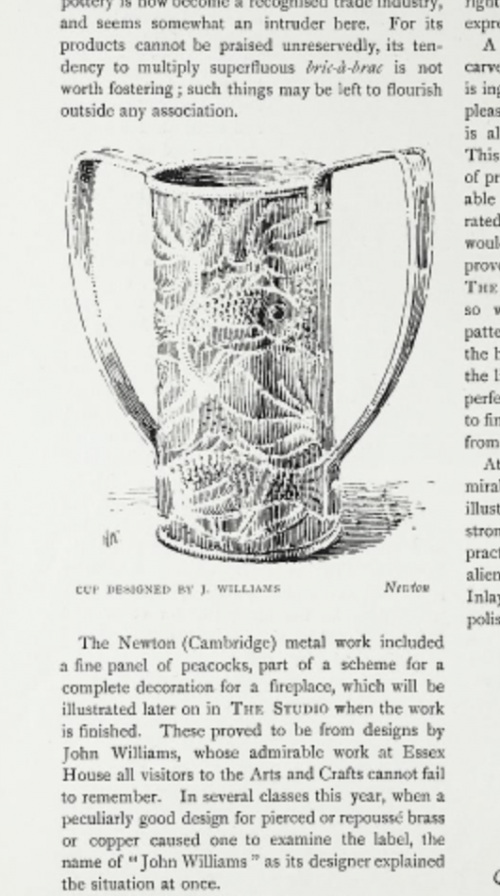
A cup designed by John Williams and made by the Newton School was shown at the Home Arts and Industries Association exhibition in 1898 and illustrated by The Studio
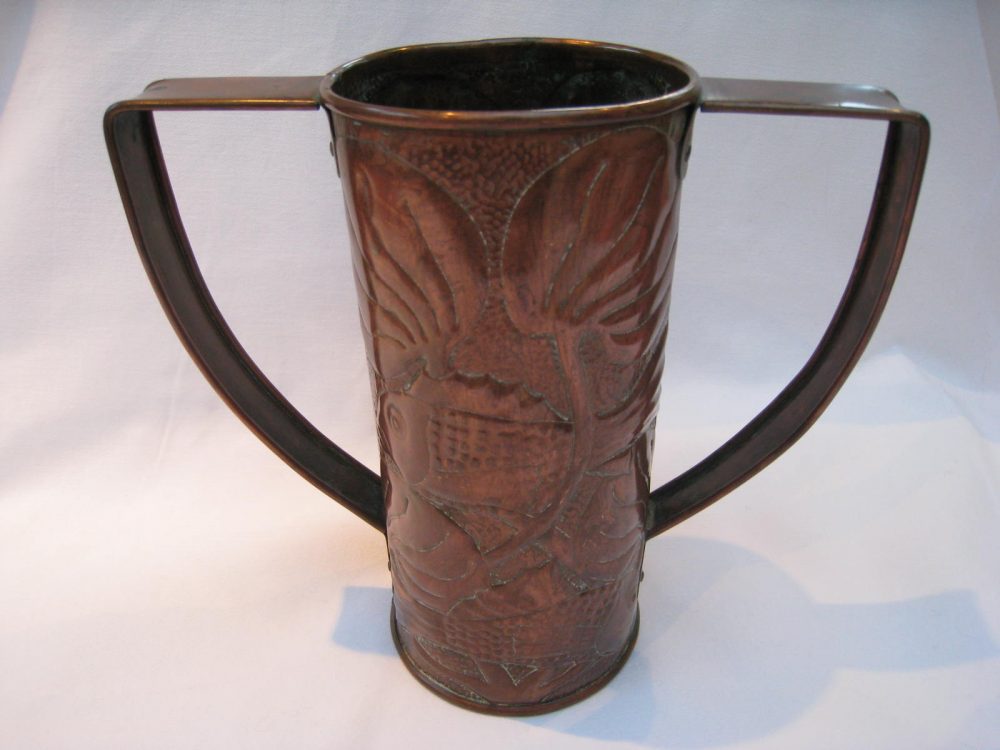
A cup designed by John Williams and likely made by the Newton School
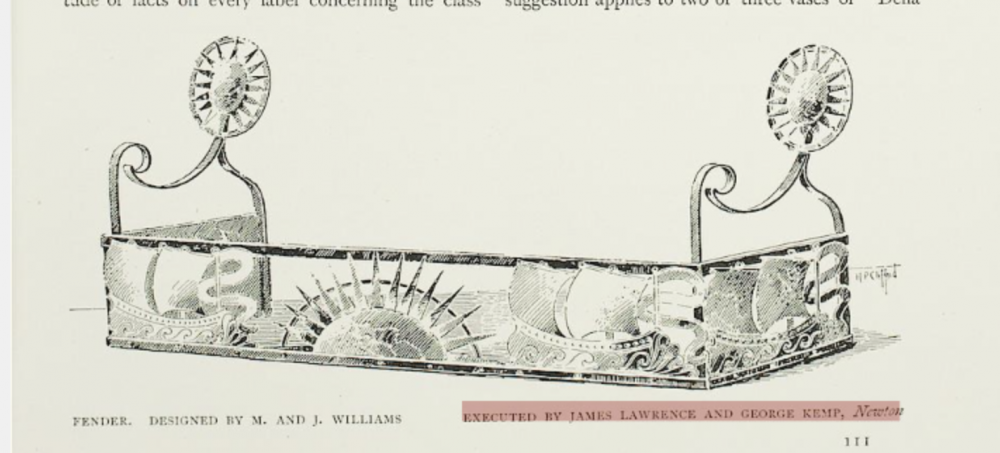
Copper fender illustrated in The Studio in 1897
The illustrated fender was designed by “M. and J. Williams”. John Williams was certainly half of the design team but who was M. Williams?
Mary Williams
The mysterious “M. Williams” is, I believe, Mary Williams. Mary Williams was born in 1868 in St Lukes, London. The census data shows that Mary was an Art Metalworker by 1901. She lived in London with her sister, Ann, who was also an Art Metalworker. The sisters are still living together in 1911 and this time Mary is shown as providing Art Metalwork classes.
We’ve already established that John Williams also taught at the Fivemiletown Metalworking School in Ireland. A Miss Mary Williams of London also provided some designs for the Fivemiletown School and visited Fivemiletown in the 1890s. She was responsible for the design of an altar cross that was exhibited in 18993. A copper tankard designed by Mary Williams for the Fivemiletown class was pictured in The Studio in July 18994.
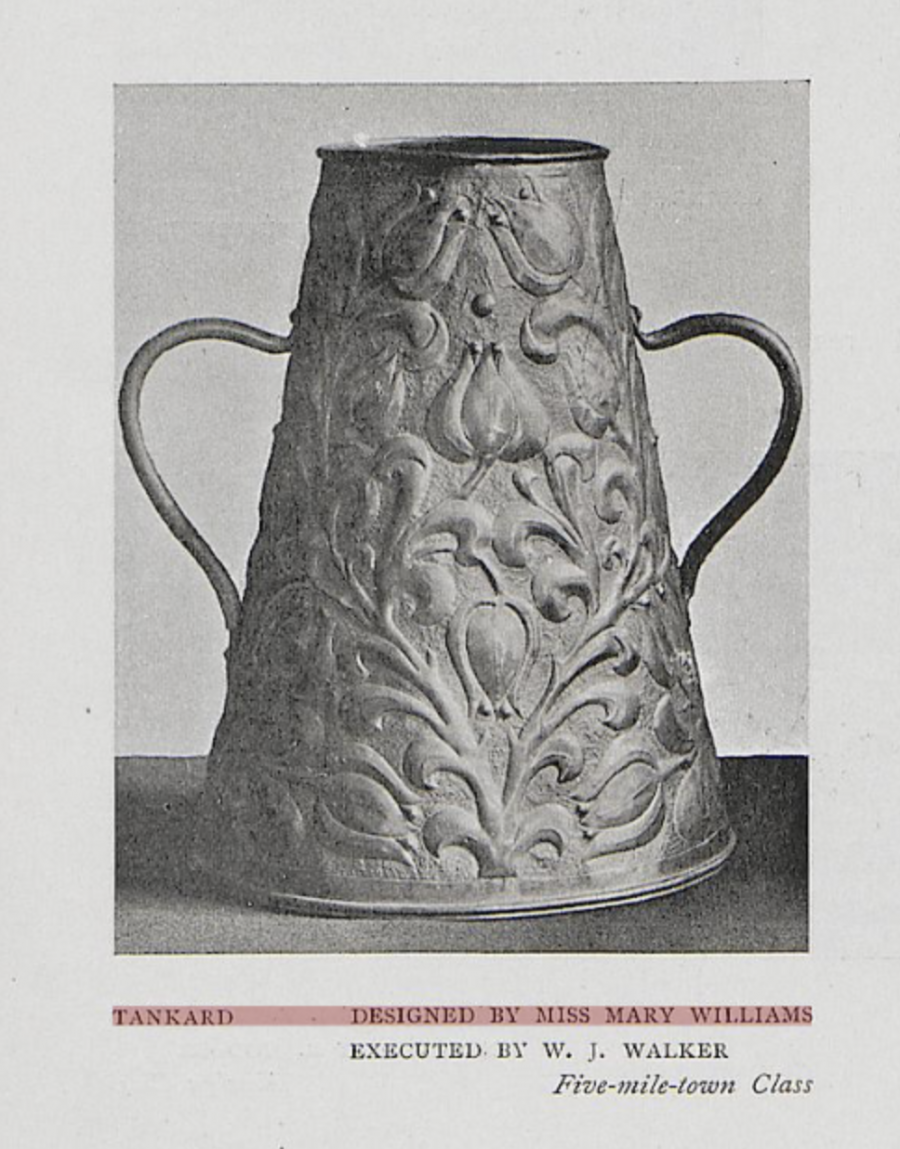
Copper tankard by Miss Mary Williams illustrated in The Studio in 1899
It seemed obvious that Mary and John Williams were related in some way. Some work with the census information and records has proved that Mary was in fact John’s elder sister by 2 years. Decorative design clearly ran in the family!
Further evidence of the design involvement of Mary came through the acquisition of a copper mirror by the Newton School. Dated, 1907 and clearly marked to the back designed by M. Williams and made by G. Newling.
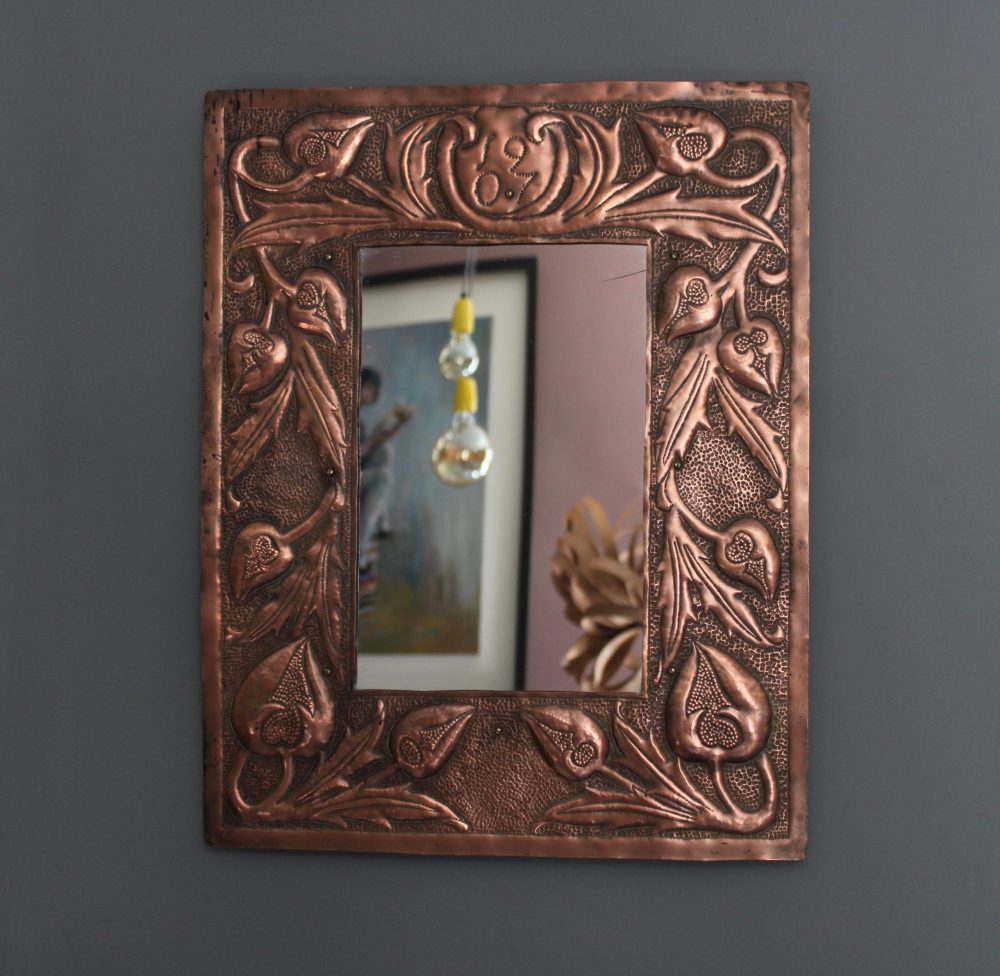
Copper mirror designed by M. Williams and made by G. Newling at the Newton School of Metalwork
George S. Tanner
Further recent acquisitions threw another designer into the mix. Two very interesting pieces both made by Albert Prime and marked as designed by “G.S. Tanner”.
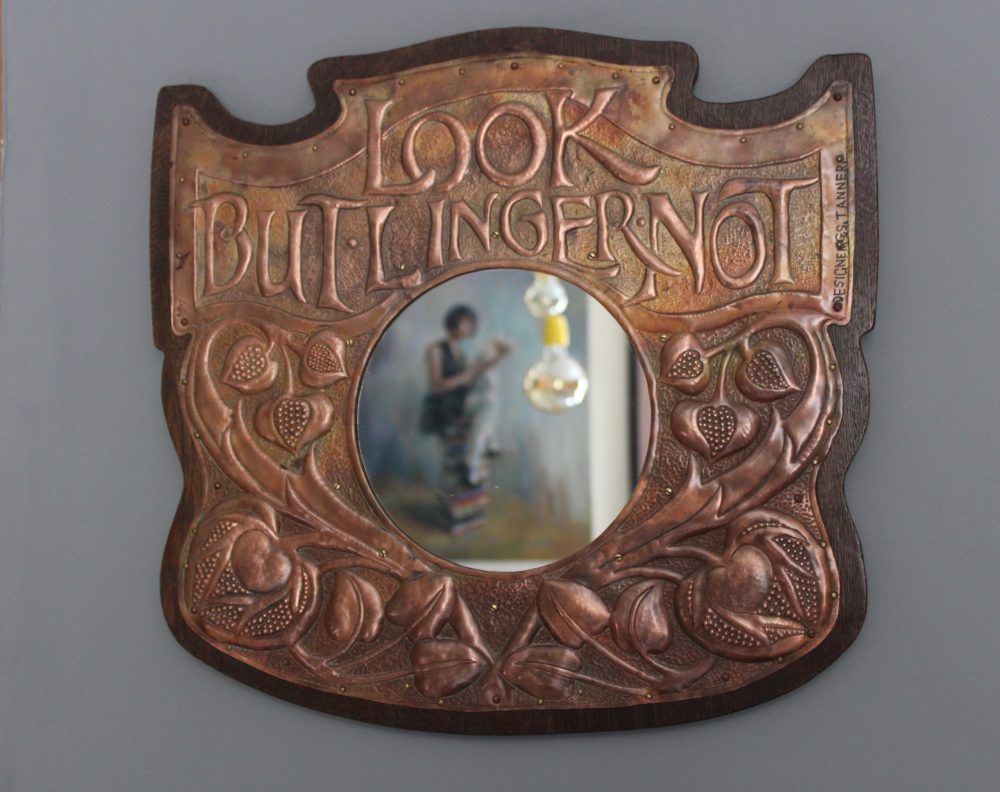
Copper mirror designed by G. S. Tanner and made by A.Prime at the Newton School of Metalwork
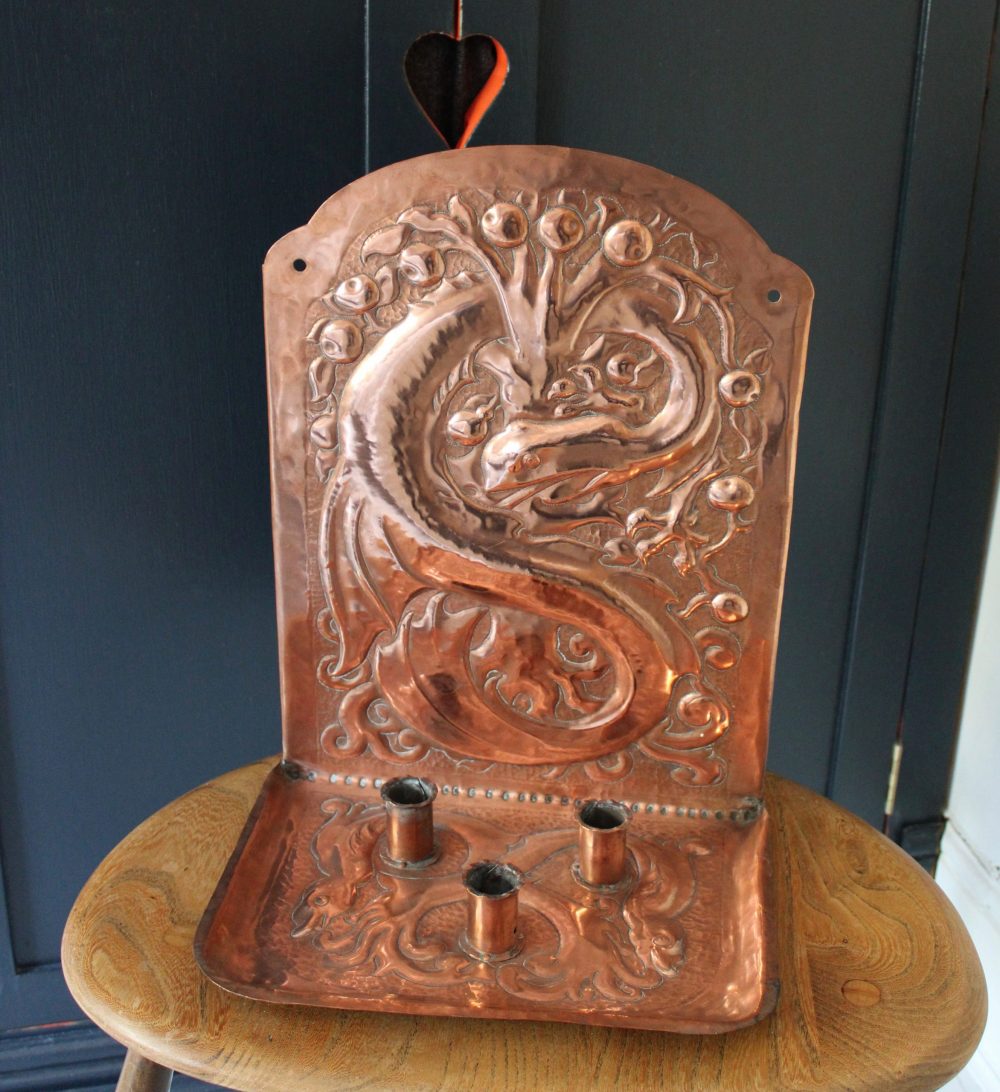
Copper sconce designed by G. S. Tanner and made by A.Prime at the Newton School of Metalwork
The first thing that will probably catch your eye is that the sconce is very similar to a sconce designed by J. D. Mackenzie for the Newlyn School. It seems that G.S. Tanner was not averse to borrowing design ideas!
The seller of these pieces was related to Albert Prime and kindly shared that G.S. Tanner was another designer from London. Some research on the census records soon identified a likely fit. George S. Tanner was born in 1869 in South Lambeth, Surrey. In 1891 he is listed as a Drafter but by 1901 he is listed as a Designer/Sculptor. By 1911 he appears to have gone back into the family firm of Drapers and Shop Fitters.
The census information also enabled me to link George Tanner to The Studio. He was a very active designer in the late 1890s and submitted multiple entries to the design competitions held by The Studio. He was very successful for several years and had a number of prizes and honourable mentions. Like a lot of the competition entrants at the time he had a pseudonym, “Sixpence5”.
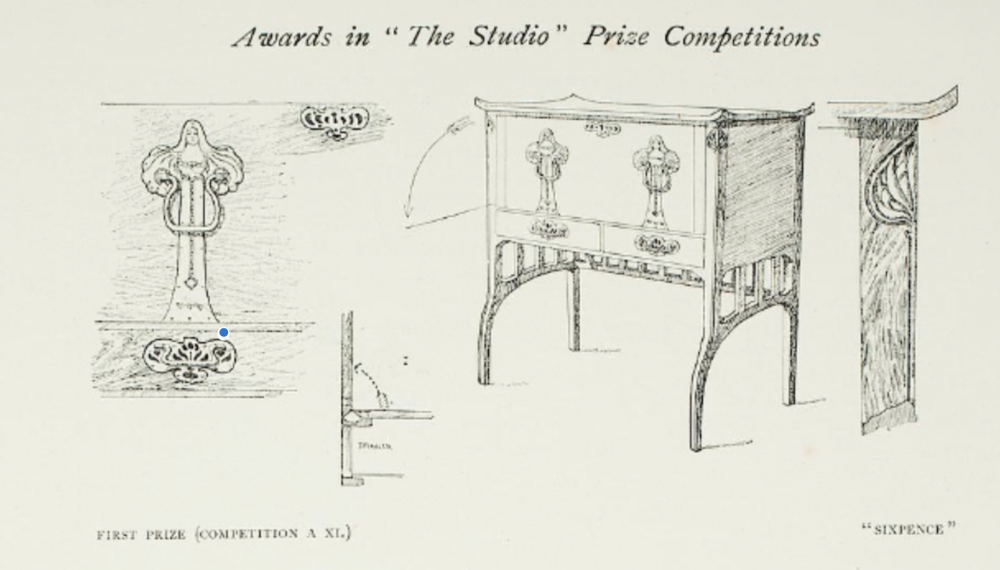
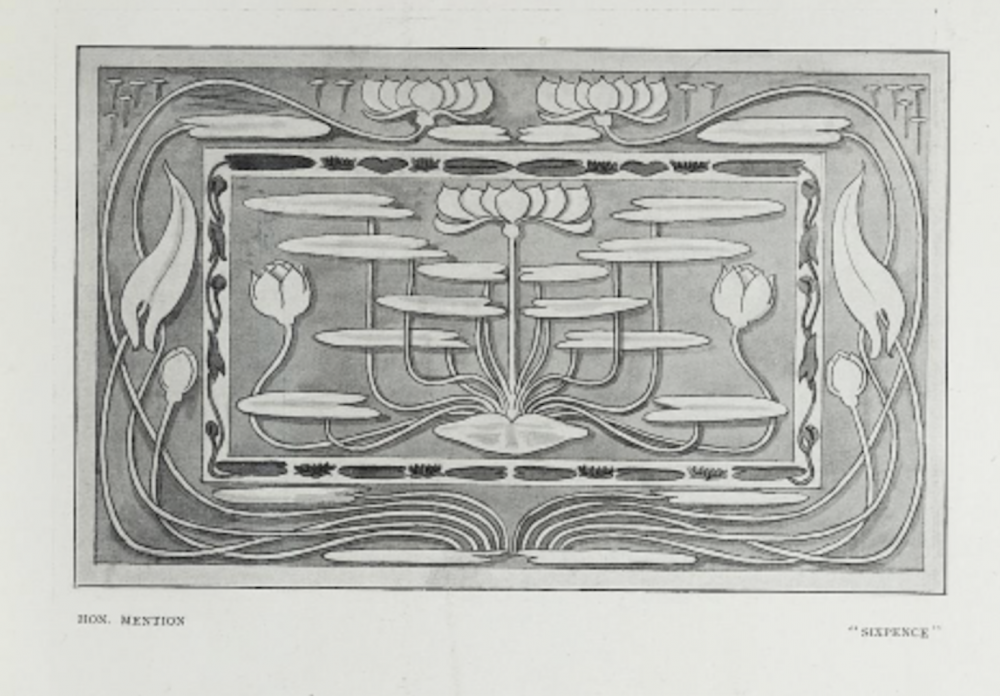
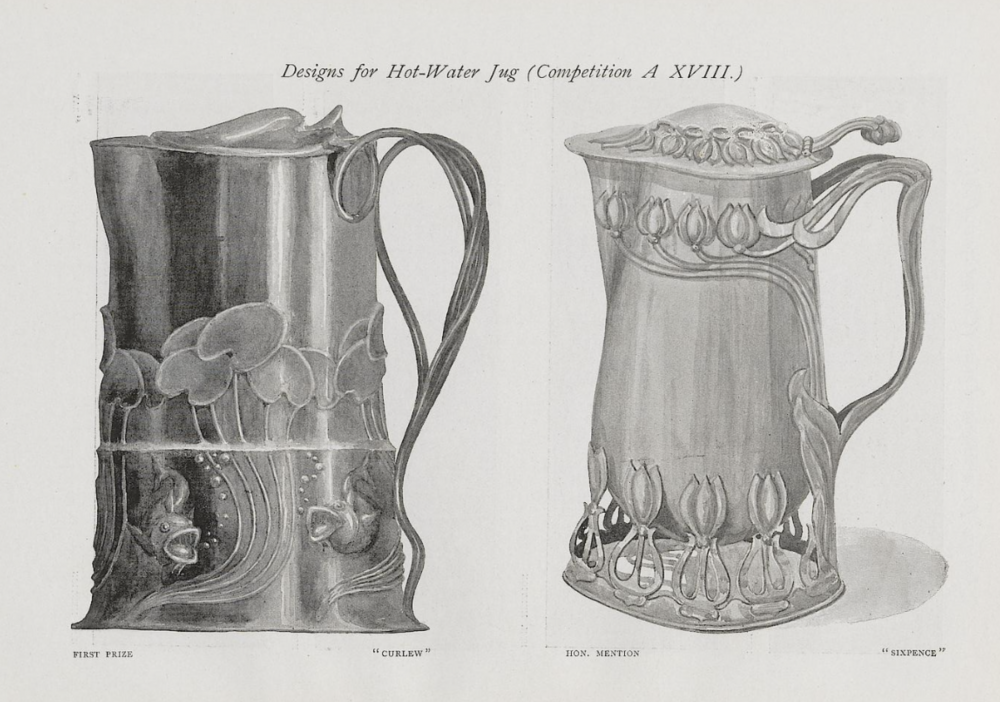
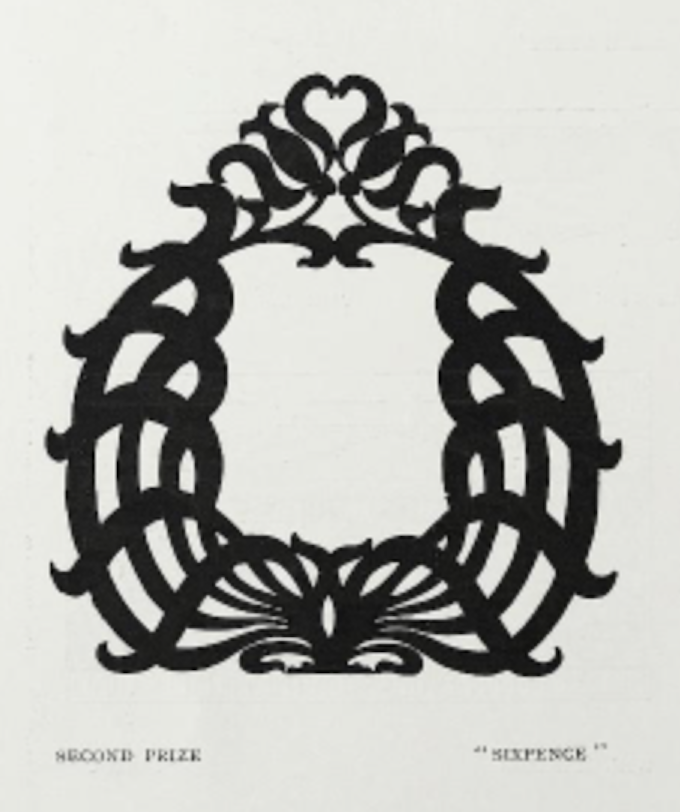
As ever, I would be fascinated to hear from anyone who can add to the story of these designers.
- The Studio, 1894
- The Studio 1898
- The Arts and Crafts Movement in Ireland, Paul Larmour
- The Studio 1899
- The Studio 1896-1899